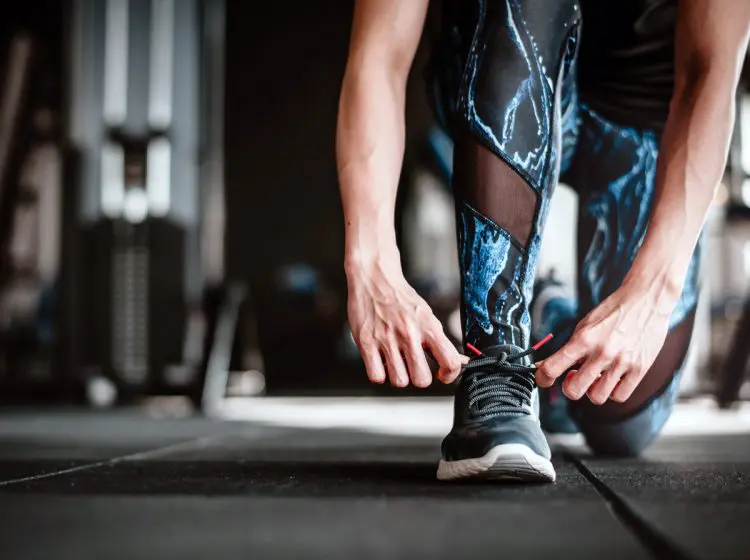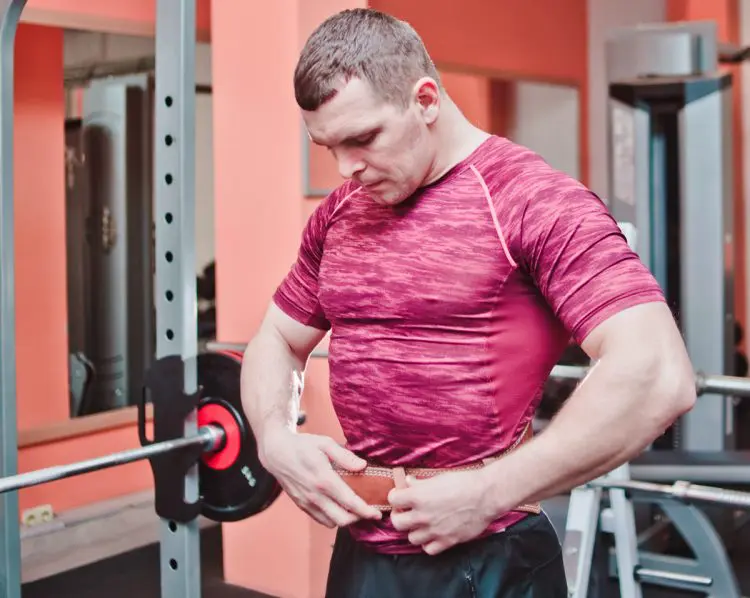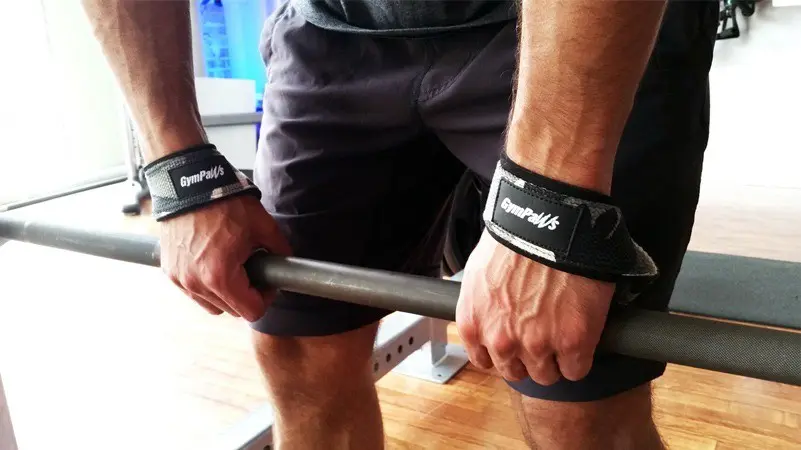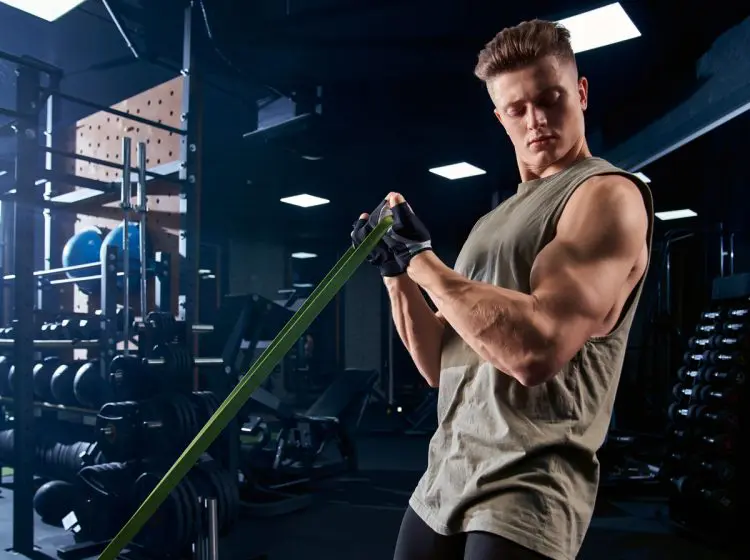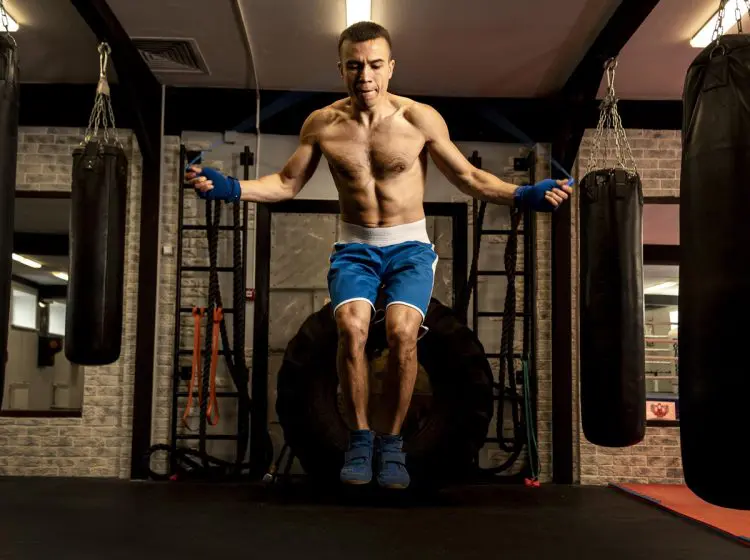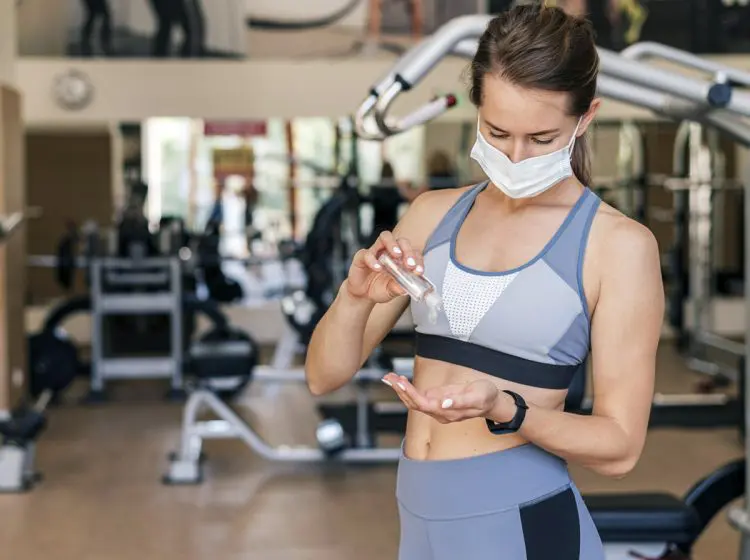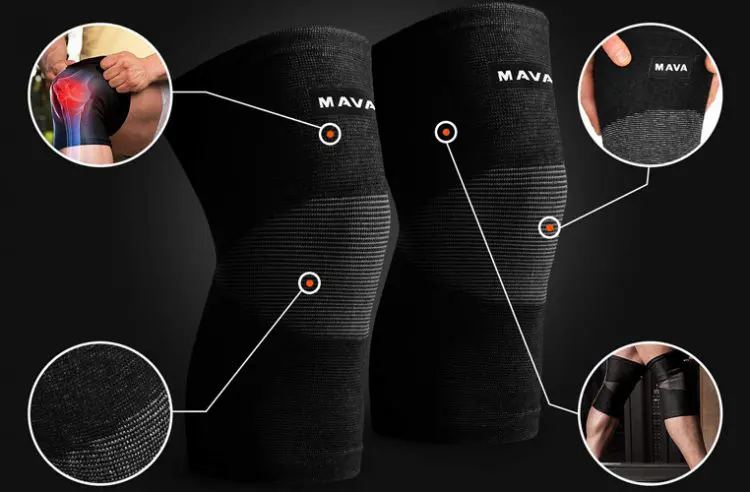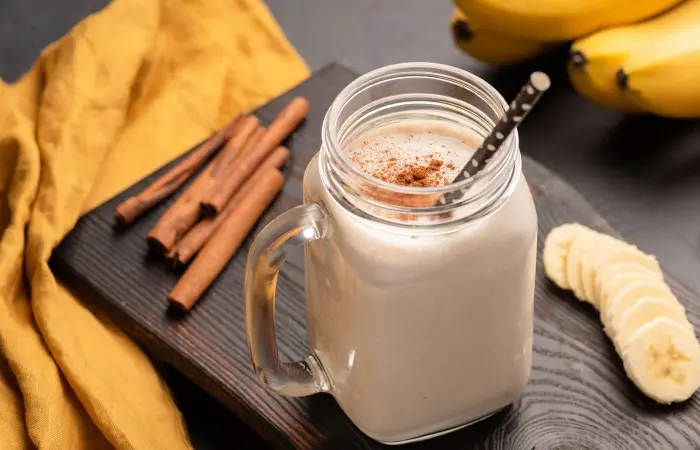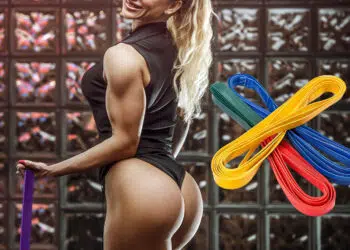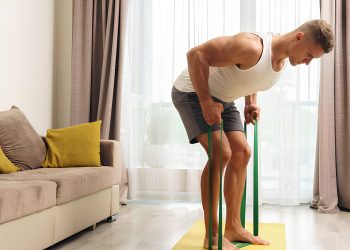There is nothing worse than a workout that ends up being not as productive as you’d hoped for. You show up, ready to do battle with the weights, only to realize something this missing or that something doesn’t feel quite right. You still go through the motions, but you KNOW your workout just
won’t be as good.
What a frustrating waste of time!
Make your workouts more enjoyable, effective, and comfortable by adding these essential items to your gym bag. Keep your gym bag packed so that you’re always prepared for your next workout.
1. The Right Shoes
While any old sneakers are okay for most upper body workouts if it’s squat or deadlift day, your choice of shoes can have a big impact on how you perform. Squashy running shoes will compress and distort under heavy weights and could limit how much you can safely squat. Similarly, shoes with raised heels will push you onto your toes, wreaking havoc on your deadlift form.
Enjoy more productive lower body workouts by wearing the right shoes. Make sure you’ve always got them with you by keeping them in your gym bag.
Level Up Your Fitness: Join our 💪 strong community in Fitness Volt Newsletter. Get daily inspiration, expert-backed workouts, nutrition tips, the latest in strength sports, and the support you need to reach your goals. Subscribe for free!
2. Lifting Chalk
Grip plays a crucial role in the successful performance of many exercises. From curls to pulldowns to deadlifts, if your grip starts to fail before the target muscles, your workout won’t be as productive as it should be.
Wiping your hands on a gym towel before you start each set can help keep your palms dry, but experienced lifters use chalk too. Chalk soaks up sweat and keeps your hands drier for longer.
You can buy loose chalk powder, chalk in compressed blocks, and there are liquid chalks too. Each one will keep your palms dry, so you won’t have to worry so much about your sweaty, slippery palms bringing your set to a premature end.
Not all gyms allow chalk, so make sure you adhere to the rules of where you train. The downside of chalk is that it leaves a white residue, and some training establishments don’t appreciate the mess.
3. Lifting Belt
While you don’t HAVE to use a lifting belt, wearing one may increase your performance on things like squats, deadlifts, and overhead presses. Belts don’t support your spine. Instead, they help you generate more intra-abdominal pressure (IAP), so you can support your spine better yourself.
There are lots of different styles of weightlifting belts to choose from, including lightweight neoprene belts that do little more than keep your back warm and thick, stiff powerlifting belts with lever buckles. The right choice depends on what you need your belt for.
Read more about the benefits of using a weightlifting belt in this
in-depth guide.
4. Lifting Straps
A cast-iron grip is vital for doing heavy deadlifts, rows, pull-ups, and pulldowns. After all, if you can’t keep hold of whatever you are lifting, you won’t be able to use as much weight or do as many reps. Because of this, most lifters should spend time
building their grip.
That said, even the strongest grip can fail, which is where lifting straps come in. Lifting straps provide a secure connection between your hands and the bar, leaving you free to focus on pumping out the reps.
Using lifting straps may also help relieve the elbow pain that can be caused by hard and repetitive gripping. Of course, you should still train your grip, so you don’t have to use lifting straps the whole time but, if you need an instant grip strength boost, lifting straps will help.
5. Resistance Bands
Resistance bands take up next to no room in your gym bag but can add a lot to your workouts. You can use short “mini bands” to increase glute activation for better lower body training or larger bands to make exercises like bench presses, deadlifts, and squats more demanding.
Sets of band pull-aparts will help strengthen your upper back for batter posture, and you can also use resistance bands for stretching.
Some gyms have bands, but you can save yourself from having to search for them by keeping a few in your gym bag. As an added benefit, you can use your bands anywhere and anytime you need a workout but can’t make it to the gym.
6. Jump Rope
A good workout starts with a thorough warm-up, and part of the warm-up process is increasing your core temperature. While any cardio machine will do the job, jumping rope is arguably one of the best options.
Jumping rope is a full-body activity and, because it involves jumping, also helps fire up your nervous system. It’s good for increasing hand-eye coordination and agility too.
You can also use a jump rope to make your strength workouts better for fat burning. A set of 30-45 seconds of jump rope between strength training exercises will have a significant impact on your total energy expenditure.
Level Up Your Fitness: Join our 💪 strong community in Fitness Volt Newsletter. Get daily inspiration, expert-backed workouts, nutrition tips, the latest in strength sports, and the support you need to reach your goals. Subscribe for free!
Jumping rope is a good met-con finisher to any bodybuilding workout. Try a Tabata jump workout, or do some EMOM training. Like resistance bands, if you’ve got a jump rope in your gym bag, you can workout anytime you can’t make it to the gym. Jumping rope is the perfect home cardio and fat-burning workout.
7. Hand Sanitizer
Gyms are hotbeds for germs. It’s all too easy to pick up germs when sharing workout equipment. You use a barbell after someone else, wipe your face, and, before you know it, catch an illness that could ruin your next few weeks or months of training.
Reduce the chances of cross-contamination by using a hand sanitizer when you start or finish using an item of gym equipment. Keep a bottle in your gym bag and get into the habit of using it regularly.
8. Bluetooth Headphones
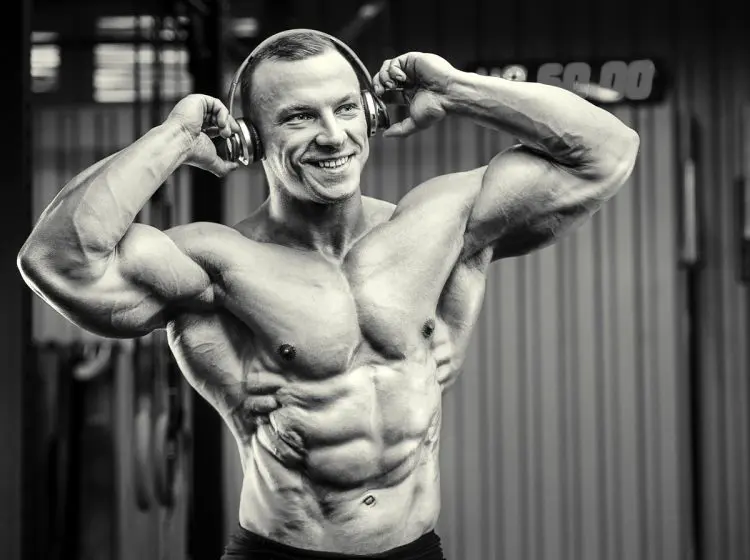
Music can be incredibly motivating. The right piece of music will lift your mood, pump up your aggression, and distract you from the pain of even the most intense workout. So, why is it then that a lot of gyms play such gawd-awful music?!
Harness the energizing power of music by creating some kick-ass training playlists, putting on your Bluetooth
headphones, and going into your own private workout bubble.
Bluetooth headphones are perfect for the gym because you can leave your phone/MP3 player in your gym bag and carry out your workout unencumbered. Wearing headphones is also a sign to other gym users that you are there to train and not to chat. You’re not being anti-social; you’re just avoiding distractions and trying to maintain your focus.
9. Gym Towel
It’s a courtesy to other gym users to use a gym towel to mop up your sweat. Wipe your face between sets, dry your hands, or put your towel on whatever bench or seat you’re using. No one wants to sit in a puddle of your perspiration, so make sure you’ve always got a towel with you by keeping a fresh one in your gym bag.
You can also use a towel as a training tool. Build an unbreakable grip with towel chin-ups or pump up your biceps with towel kettlebell curls.
10. Knee and Elbow Sleeves
Strength training is mostly a healthy activity. However, do it long enough, and you may start to experience a few aches and pains. Elbow and knee sleeves provide your hard-working joints with some welcome support and also help keep them warm, which can help alleviate pain and stiffness.
Whether you currently have painful knees or elbows or just want to avoid them in the future, adding knee and elbow sleeves to your workout outfit may help.
11. Water Bottle
Dehydration can have a huge impact on your workout performance. Losing even a little water will lead to premature fatigue and weakness. You don’t even have to sweat heavily to lose water; you’re exhaling water vapor all the time. The harder you breathe, the more water you lose.
Avoid thirst and dehydration by drinking water throughout your workout. Add some branched-chain amino acids to your drink for extra energy and to reduce exercise-induced muscle breakdown.
For the sake of the environment, reusable water bottles are generally best. Look for bottles made from stainless steel rather than aluminum and if you prefer plastic, choose bottles that are certified BPA-free.
[Related: Best Shaker Bottles Reviewed]
12. Post-workout Shake or Snack
The faster you recover, the sooner you can get back in the gym and train again. Providing you are fully recovered, more workouts in less time mean better results. Kickstart the recovery process by consuming a fast-acting protein and carbohydrate shake or snack as soon as you finish your workout.
The protein will provide your muscles with the materials they need for repair and growth, while the carbs will replenish your depleted muscle glycogen.
Prep your post-training shake or snack in advance and pack it in your gym bag so you don’t forget it. Ignoring post-workout nutrition could delay the recovery process, leading to slower progress.
[Related: The Absolute Best Tasting Protein Powders of 2021 Reviewed]
Gym Bag Essentials – Wrapping Up
Prior preparation prevents poor performance. This age-old adage can be applied to lots of things, from decorating your house to maintaining your car to training in the gym.
Make sure your workouts are as productive as possible by packing your gym bag with these exercise essentials. Keep them in your bag so that you’ve always got them when you need them.

